Med bound, blog 2
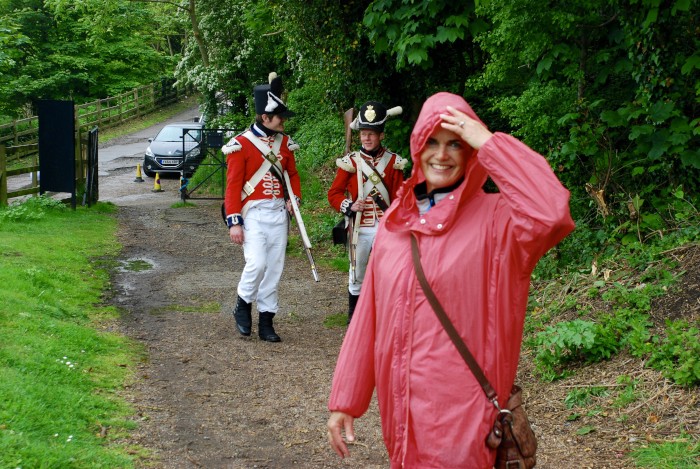
The good news is that the finger is healing and has not been too painful. I have been sailing with a dressing and a latex glove over the hand to keep it dry. We have made good progress, although we are now sitting out a “wind on the nose” day in Dunkerque. This morning, was a washing day and we went to the war museum. Of course we all have heard of Dunkerque but it takes being here and visiting the museum to make it more poignant. I don’t think I quite understood the dilemma that the British realized they had, when they decided to withdraw, that would be abandoning the French, their Allies. However it was not their country and the chips were down. In the end in round numbers 340 000 men were evacuated, more than 100 000 of them French. 933 ships were involved 700 of them small ships. More than 200 were lost and although many have merged into the seabed over the years, there are, to this day, many isolated danger marks in these waters that mark wrecks. Today we will chill, and the plan tomorrow is to get up early at 6.00 to get the favourable tidal stream down to past Calais and to the edge of the traffic separation scheme. It would be really good if we could get at least to mid channel before the tide turns. Veronica is busy doing the course to steer calculation right now, which will include the required right angle crossing of the shipping lanes.
Anyway, back to where we left off in the last blog. We had a recuperation and finger healing day in Willemstad. It was a fortress for the Oranjes and has a defensive moat around it that is in the shape of the castle in Cape Town and the shape of the ensign for the South African air force. I guess we know who used the symbol first but it is always interesting to muse and make connections about origins. Despite inclement weather the town was abuzz with activity. It was Ascension day long weekend and the Dutch were out in strength, beginning with the local cycling clubs coming to stop on the waterfront for their ritual coffee break, building later to thongs of well dressed restaurant goers and water front strollers. You know what it is like, you feel like one of those animals at the zoo, down in the pit, as they stop and goggle at your boat. It can be good for looking up dresses though but I am probably not allowed to say that here and in any case, disappointingly, the weather was not conducive to that type of attire.
On the Monday we set out across the Schelde Delta, through the Volkersksluizen and across the Grevelingenmeer. The weather was chilly and there was no wind to speak of, although we did put out a bit of foresail for a small section. We went through the Krammersluizen and I think were quite lucky, as we had been told that a 3 hour wait for the opening bridge and lock is not unusual. The Keten Mestgat on the other side was tidal (or controlled tidal). The day was uneventful and we locked into the narrow Veerse Meer and stopped at a lovely marina at Kortgene. We went into the little village for supplies and left our berth with food stores replenished at about 11.00.
The plan for Tuesday was to stop in Veere, which we had heard is well worth a visit for lunch. The thinking was that we would lock into our final canal in Holland, “Kanaal door Walcheren” and stop at the marina on the up side of the lock and walk into town. This plan was foiled by virtue of the fact that the marina shown on the pilot guide, no longer existed. So, lunch was a pleasant boat borne affair as we plodded down this huge canal to the wafting aromas of cow dung and green fields filled with livestock.
Middelburg was a fitting town for our last night in Holland, impressive churches and squares, throngs of people taking in the sunny afternoon. I have (or will) put some pictures in the gallery. We went into the oude haven, a peaceful place with good facilities in the ground floor of one of those buildings with the inscription ANNO 1753. The next morning the harbour mistress (is that politically incorrect, does the word master imply gender?) opened the opening bridge and we took what she described as the blue wave down to Vlissingen (Flushing in English) and to the open sea. The blue wave is something like a Mexican wave at a rugby or football game, the bridges, 5 of them, and the locks all open sequentially as you arrive, so it is all quite painless really. At Vlissingen we shared the lock queue with a brand new super yacht attached to two tugs and being taken out into the sea for sea trails. I struggle to imagine how much there is to go wrong on a thing that size. Our boat is enough to get your head around.
We needed to wait for the tide so we went up to the tiny Michiel de Ruyter basin. Making about 3 knots against a raging tide we motored up to the marina. It was also a haven and hide away for the pilot boats. Anyway, we were greeted by a 5.5m wide entrance (the boat is 4.4m wide), an opening bridge and a sill to get into the marina. We were on a rising tide and would leave at high tide so we pulled the keel up to clear the sill, but not so much that the boat would go sideways in a cross wind. Amazing ourselves, we made a perfect entry and docked stern to. We spent a very pleasant 4 hours pacing the town and eating in the harbourmaster’s restaurant to credit him for allowing us a free short stay.
That afternoon we were flushed out of Flushing and half sailed, half motored to our first and only port in Belguim, Blankenberge, about 6NM west of Zeebrugge. It is a real yacht haven albeit with a shallow entrance. What the Belgium’s have in beer brewing skills, they seriously lacked in town planning and landscape planning. The coast of Belgium is lined with beachfront tower blocks that have about as much character as a bunker smashed with a blunt mallet.
After a pleasant wander along the beachfront, with, I have to say a fantastic beach and beach bars, all just waiting for the weather to match that in Rio. That is just not going to happen but at least there are dreamers in the world. On our return, we circled into the old town where we stopped for a road side breakfast amongst the local flat dwellers, down with their snappy rat like dogs for long and leisurely breakfast coffees and discussions, in Flemish, about the best dog parlours. They were friendly and it is what I enjoy most about this kind of travelling, immerse yourself in the local, where the simple things in life matter, no matter where you are in the world.
We left for Niewepoort but it went so well we decided to press on to Dunkerque, about 12 NM further. See beginning of this blog for the Dunkerque summary.
After an interesting washing and down day in Dunkerque, we left at 6am on Saturday to catch the tide. That previous afternoon had been spent going through a passage plan, which we eventually concluded would require a 5 hour stop in Calais to wait for the tide before crossing the channel. It was springs and the tidal streams run hard, up to 3,8 knots. The law requires you to cross the channel with a heading at right angles to the shipping lane. So some careful vector plotting is required. The stop in Calais was to avoid the fate of the other 2000 vessels that have been swept onto and wrecked on the Goodwin sands. If you are interested, check out Wikipedia on the topic. In the great storm of 1703 the Royal Navy lost many “men of war” ships there, as well as 2200 men and it almost resulted in HMS being an abbreviation for Her Majesty’s Shipwrecks.
We absolutely nailed it at about 8.5 knots with a following tide down to Calais, where we realized that we could make the channel crossing on the same tide. With wind against tide, things got a bit lively, we took a reef and reduced the headsail, it was a bit of a bash, hard on the wind to try and hit the edge of the shipping lane as far west as possible, to give us space to drop off into as we approached Dover. When we turned and laid off the wind and started reaching at the required right angle heading, the boat was absolutely flying, touching 9 knots at times. This is, I think, the second busiest traffic zone in the world and you need to be wide-awake. As we were about to leave the east bound lane, close to Dover, we called a freighter bearing down on us at 20 knots. We offered to hove to let them pass, but they said they would alter their course slightly to port which, they did and we were grateful for. We arrived at Dover entrance just as the tide turned and boy when it turns at springs, does it turn. We reported at 2NM out and at 200m from the breakwater, awaited permission to enter and with the engine screaming we crabbed sideways into the boiling pot that must have been running at 4-5 knots across the entrance. We were relieved to get the nose inside the outer harbour wall and make our way to the relative tranquillity of the Grenville basin.
Sunday was an off day on account of the weather. We spent time cleaning and drying the sail locker, which one of us (yes me!…Vee here) only closed on the ventilation setting and both of us set sail with out leaving the auxiliary pumps in the on position. Naughty, naughty! So we had a lot of water in there when we arrived. We also climbed the cliffs and explored the forts, entertained by a re-enactment of various military events that had happened in the past. The cliffs and ramparts were teaming with authentically clad soldiers ranging from the Napoleonic era to WW2. On the way back we stumbled upon one of the oldest yacht clubs in England, Royal Cinque Ports Yacht club, where we had to take flight from some over gregarious sailing types and a women who had been born in Zambia and had seen our SA flag in Holland.
Tomorrow we rise a five to catch the raging current down the coast to Eastbourne and we may have an additional crew member to help from there. Until the next blog au revoir. Check out the gallery before you go!
Anyway, back to where we left off in the last blog. We had a recuperation and finger healing day in Willemstad. It was a fortress for the Oranjes and has a defensive moat around it that is in the shape of the castle in Cape Town and the shape of the ensign for the South African air force. I guess we know who used the symbol first but it is always interesting to muse and make connections about origins. Despite inclement weather the town was abuzz with activity. It was Ascension day long weekend and the Dutch were out in strength, beginning with the local cycling clubs coming to stop on the waterfront for their ritual coffee break, building later to thongs of well dressed restaurant goers and water front strollers. You know what it is like, you feel like one of those animals at the zoo, down in the pit, as they stop and goggle at your boat. It can be good for looking up dresses though but I am probably not allowed to say that here and in any case, disappointingly, the weather was not conducive to that type of attire.
On the Monday we set out across the Schelde Delta, through the Volkersksluizen and across the Grevelingenmeer. The weather was chilly and there was no wind to speak of, although we did put out a bit of foresail for a small section. We went through the Krammersluizen and I think were quite lucky, as we had been told that a 3 hour wait for the opening bridge and lock is not unusual. The Keten Mestgat on the other side was tidal (or controlled tidal). The day was uneventful and we locked into the narrow Veerse Meer and stopped at a lovely marina at Kortgene. We went into the little village for supplies and left our berth with food stores replenished at about 11.00.
The plan for Tuesday was to stop in Veere, which we had heard is well worth a visit for lunch. The thinking was that we would lock into our final canal in Holland, “Kanaal door Walcheren” and stop at the marina on the up side of the lock and walk into town. This plan was foiled by virtue of the fact that the marina shown on the pilot guide, no longer existed. So, lunch was a pleasant boat borne affair as we plodded down this huge canal to the wafting aromas of cow dung and green fields filled with livestock.
Middelburg was a fitting town for our last night in Holland, impressive churches and squares, throngs of people taking in the sunny afternoon. I have (or will) put some pictures in the gallery. We went into the oude haven, a peaceful place with good facilities in the ground floor of one of those buildings with the inscription ANNO 1753. The next morning the harbour mistress (is that politically incorrect, does the word master imply gender?) opened the opening bridge and we took what she described as the blue wave down to Vlissingen (Flushing in English) and to the open sea. The blue wave is something like a Mexican wave at a rugby or football game, the bridges, 5 of them, and the locks all open sequentially as you arrive, so it is all quite painless really. At Vlissingen we shared the lock queue with a brand new super yacht attached to two tugs and being taken out into the sea for sea trails. I struggle to imagine how much there is to go wrong on a thing that size. Our boat is enough to get your head around.
We needed to wait for the tide so we went up to the tiny Michiel de Ruyter basin. Making about 3 knots against a raging tide we motored up to the marina. It was also a haven and hide away for the pilot boats. Anyway, we were greeted by a 5.5m wide entrance (the boat is 4.4m wide), an opening bridge and a sill to get into the marina. We were on a rising tide and would leave at high tide so we pulled the keel up to clear the sill, but not so much that the boat would go sideways in a cross wind. Amazing ourselves, we made a perfect entry and docked stern to. We spent a very pleasant 4 hours pacing the town and eating in the harbourmaster’s restaurant to credit him for allowing us a free short stay.
That afternoon we were flushed out of Flushing and half sailed, half motored to our first and only port in Belguim, Blankenberge, about 6NM west of Zeebrugge. It is a real yacht haven albeit with a shallow entrance. What the Belgium’s have in beer brewing skills, they seriously lacked in town planning and landscape planning. The coast of Belgium is lined with beachfront tower blocks that have about as much character as a bunker smashed with a blunt mallet.
After a pleasant wander along the beachfront, with, I have to say a fantastic beach and beach bars, all just waiting for the weather to match that in Rio. That is just not going to happen but at least there are dreamers in the world. On our return, we circled into the old town where we stopped for a road side breakfast amongst the local flat dwellers, down with their snappy rat like dogs for long and leisurely breakfast coffees and discussions, in Flemish, about the best dog parlours. They were friendly and it is what I enjoy most about this kind of travelling, immerse yourself in the local, where the simple things in life matter, no matter where you are in the world.
We left for Niewepoort but it went so well we decided to press on to Dunkerque, about 12 NM further. See beginning of this blog for the Dunkerque summary.
After an interesting washing and down day in Dunkerque, we left at 6am on Saturday to catch the tide. That previous afternoon had been spent going through a passage plan, which we eventually concluded would require a 5 hour stop in Calais to wait for the tide before crossing the channel. It was springs and the tidal streams run hard, up to 3,8 knots. The law requires you to cross the channel with a heading at right angles to the shipping lane. So some careful vector plotting is required. The stop in Calais was to avoid the fate of the other 2000 vessels that have been swept onto and wrecked on the Goodwin sands. If you are interested, check out Wikipedia on the topic. In the great storm of 1703 the Royal Navy lost many “men of war” ships there, as well as 2200 men and it almost resulted in HMS being an abbreviation for Her Majesty’s Shipwrecks.
We absolutely nailed it at about 8.5 knots with a following tide down to Calais, where we realized that we could make the channel crossing on the same tide. With wind against tide, things got a bit lively, we took a reef and reduced the headsail, it was a bit of a bash, hard on the wind to try and hit the edge of the shipping lane as far west as possible, to give us space to drop off into as we approached Dover. When we turned and laid off the wind and started reaching at the required right angle heading, the boat was absolutely flying, touching 9 knots at times. This is, I think, the second busiest traffic zone in the world and you need to be wide-awake. As we were about to leave the east bound lane, close to Dover, we called a freighter bearing down on us at 20 knots. We offered to hove to let them pass, but they said they would alter their course slightly to port which, they did and we were grateful for. We arrived at Dover entrance just as the tide turned and boy when it turns at springs, does it turn. We reported at 2NM out and at 200m from the breakwater, awaited permission to enter and with the engine screaming we crabbed sideways into the boiling pot that must have been running at 4-5 knots across the entrance. We were relieved to get the nose inside the outer harbour wall and make our way to the relative tranquillity of the Grenville basin.
Sunday was an off day on account of the weather. We spent time cleaning and drying the sail locker, which one of us (yes me!…Vee here) only closed on the ventilation setting and both of us set sail with out leaving the auxiliary pumps in the on position. Naughty, naughty! So we had a lot of water in there when we arrived. We also climbed the cliffs and explored the forts, entertained by a re-enactment of various military events that had happened in the past. The cliffs and ramparts were teaming with authentically clad soldiers ranging from the Napoleonic era to WW2. On the way back we stumbled upon one of the oldest yacht clubs in England, Royal Cinque Ports Yacht club, where we had to take flight from some over gregarious sailing types and a women who had been born in Zambia and had seen our SA flag in Holland.
Tomorrow we rise a five to catch the raging current down the coast to Eastbourne and we may have an additional crew member to help from there. Until the next blog au revoir. Check out the gallery before you go!

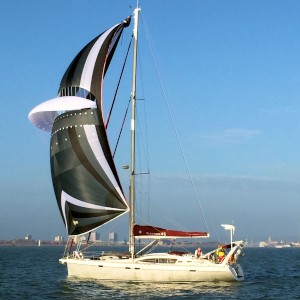
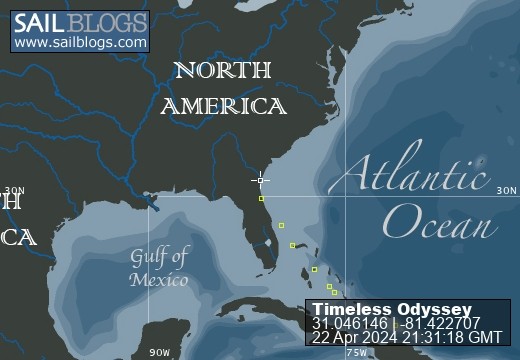

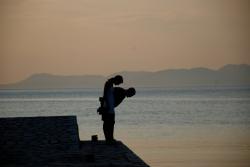
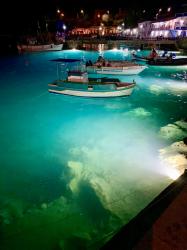


Comments